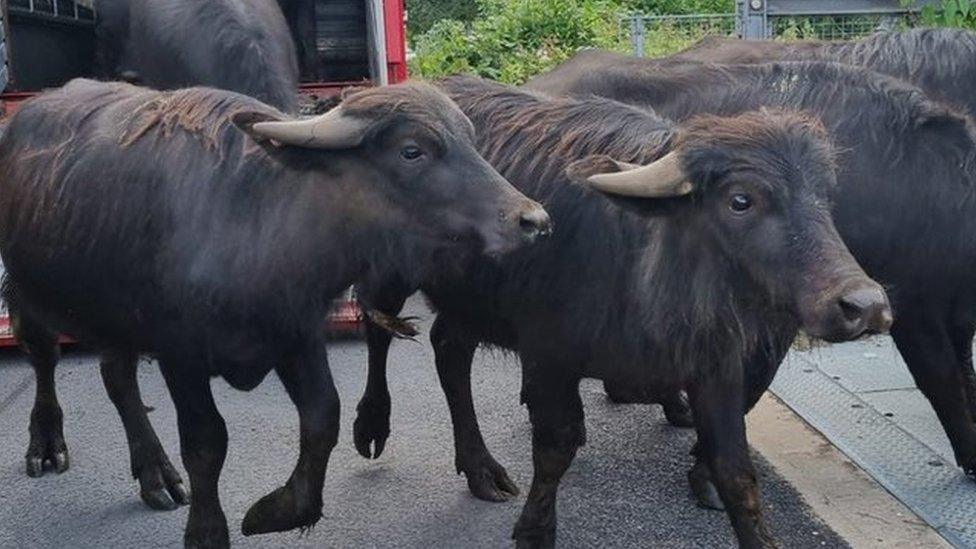Water buffalo 'to boost biodiversity on moor'
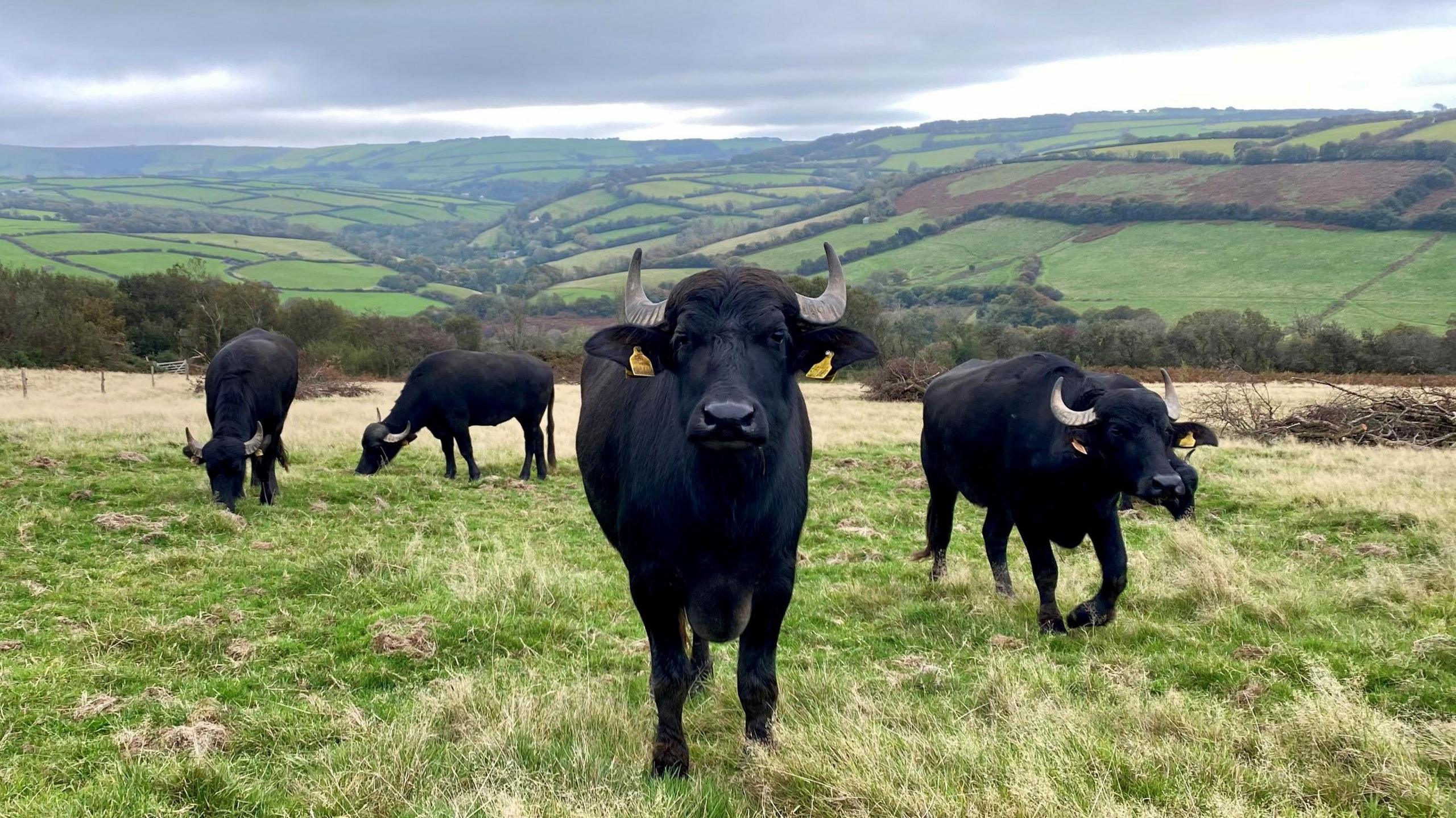
Six female water buffalo have been introduced to Tattiscombe on Exmoor
- Published
Water buffalo have been introduced to an area of west Exmoor in a project which aims to restore agricultural land to its original state.
The National Trust said six female buffalo were on a 120-acre (49-hectare) site at Tattiscombe in north Devon with the intention of turning farmland back into wild wetlands.
It said the buffalo were known as "wetland architects" because they used their hooves to churn soil, create wallows and keep ponds open - slowing water flow and helping it settle naturally on the moors.
The work they did also helped the soil hold water during floods and droughts and improved the landscape's resilience, the trust said.
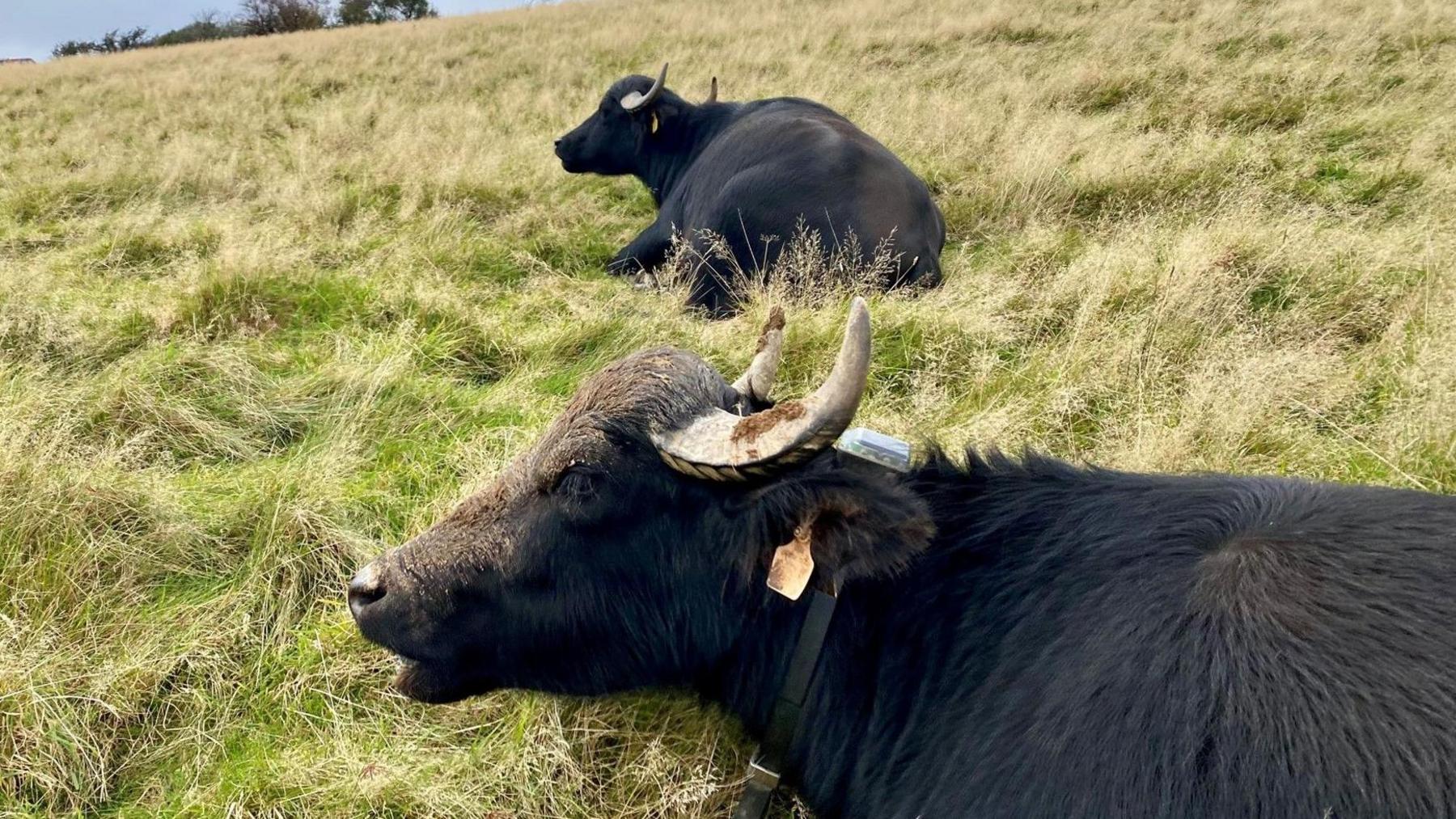
The National Trust said Tattiscombe was an ideal habitat
Murray Sharpe, farm manager for the West Exmoor National Trust, said: "Buffalo are specialised wetland animals, and this site offers an ideal habitat for them.
"By grazing and browsing around the many ponds, scrapes and ditches on site, they'll help shape a broader range of habitats than we could achieve without them.
"In doing so, they'll create a wealth of new niches for wildlife and play a role in driving the ecology of the site," he added.
Water buffalo originate from Asia but, in recent years, they have been used at various sites in the UK instead of using heavy machinery to boost biodiversity, the trust said.
It said the mammals were hardier and more tolerant of water-logged conditions than domestic cattle and were better suited to the conditions.
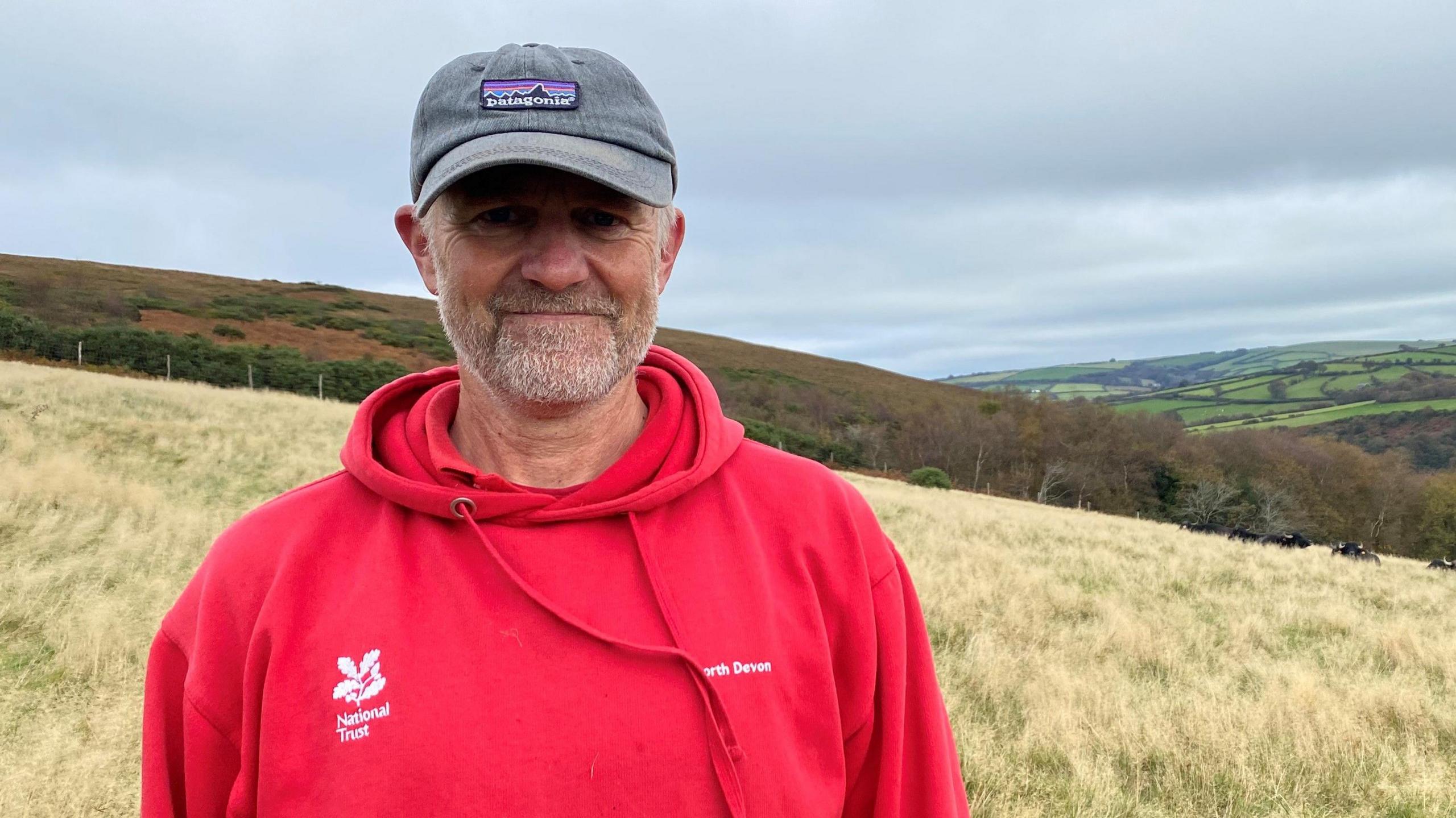
Murray Sharpe said the buffalo would create a wealth of new niches for wildlife
The area where the buffalo are located cannot be accessed by the public. It is cared for by the National Trust and includes wood pasture, grassland, hedgerows, and wetlands.
Alex Palmer, from the National Trust, said: "Introducing buffalo here will build on the success of the work already completed on site.
"The buffalo are a key component to the future success for this site and we are looking forward to seeing their impact."
The team from the National Trust will monitor how the landscape responds - tracking changes in water flow, plant diversity and wildlife numbers over the coming years.
Follow BBC Devon on X, external, Facebook, external and Instagram, external. Send your story ideas to spotlight@bbc.co.uk, external.
- Published27 July
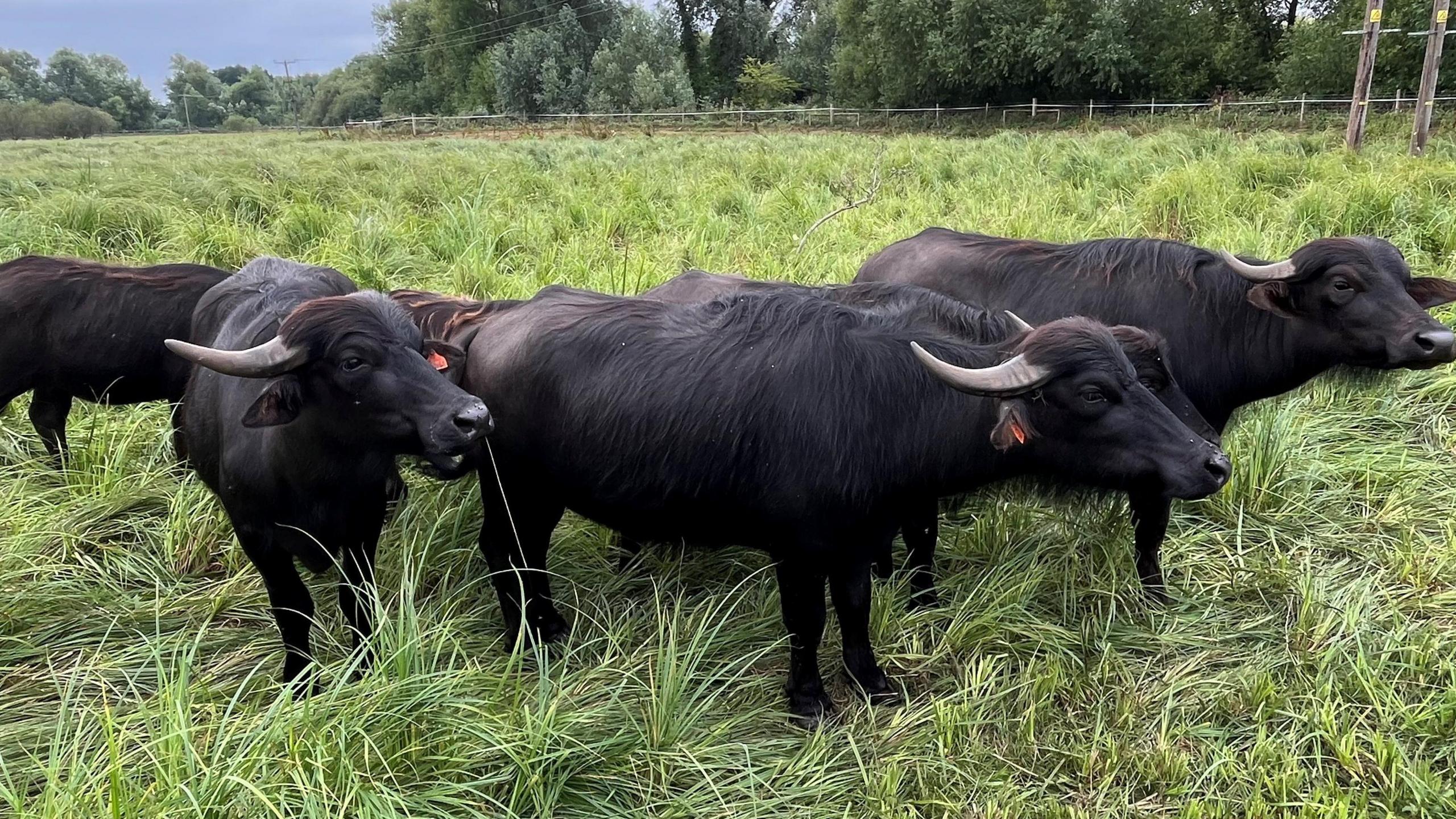
- Published25 July 2023
